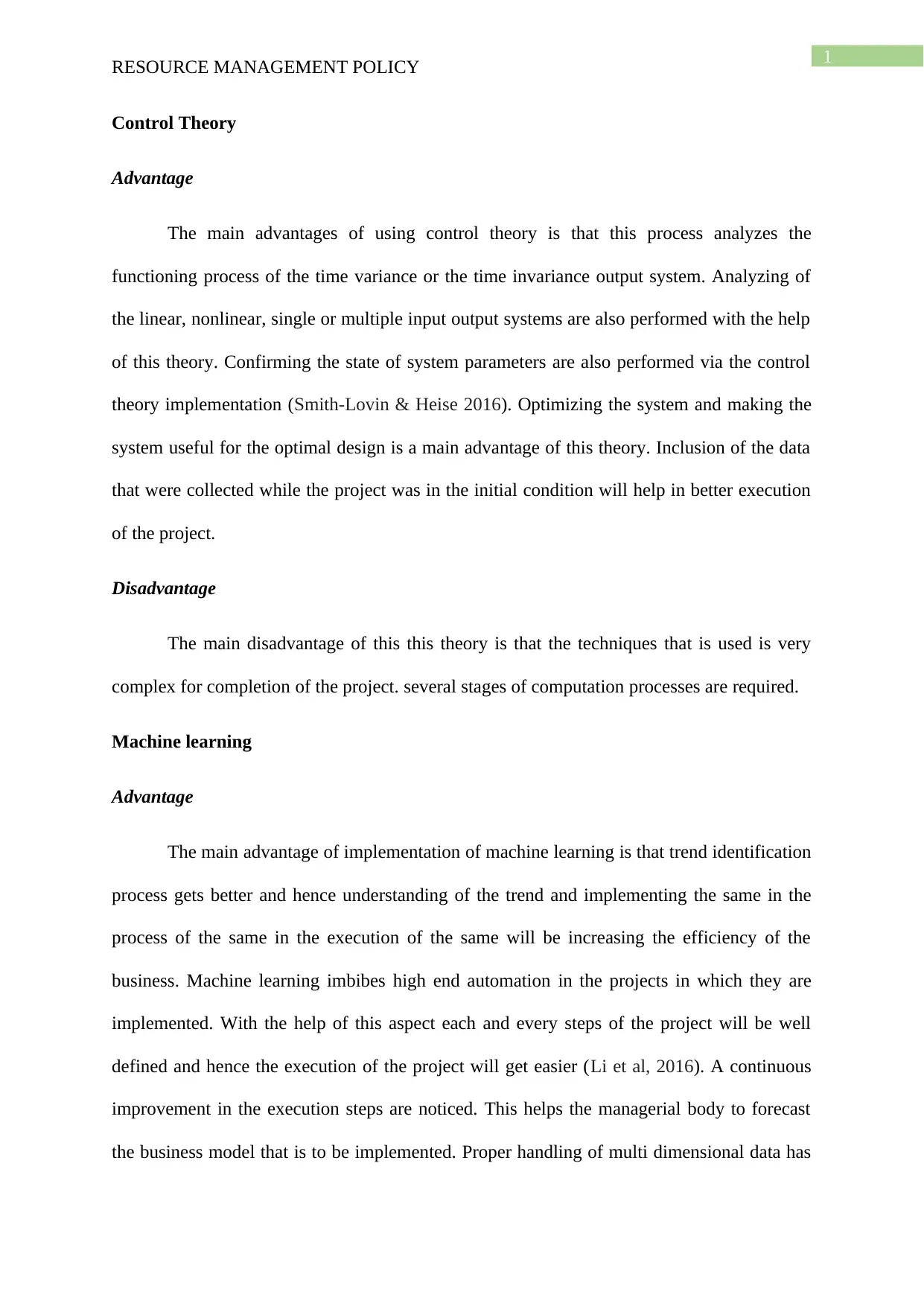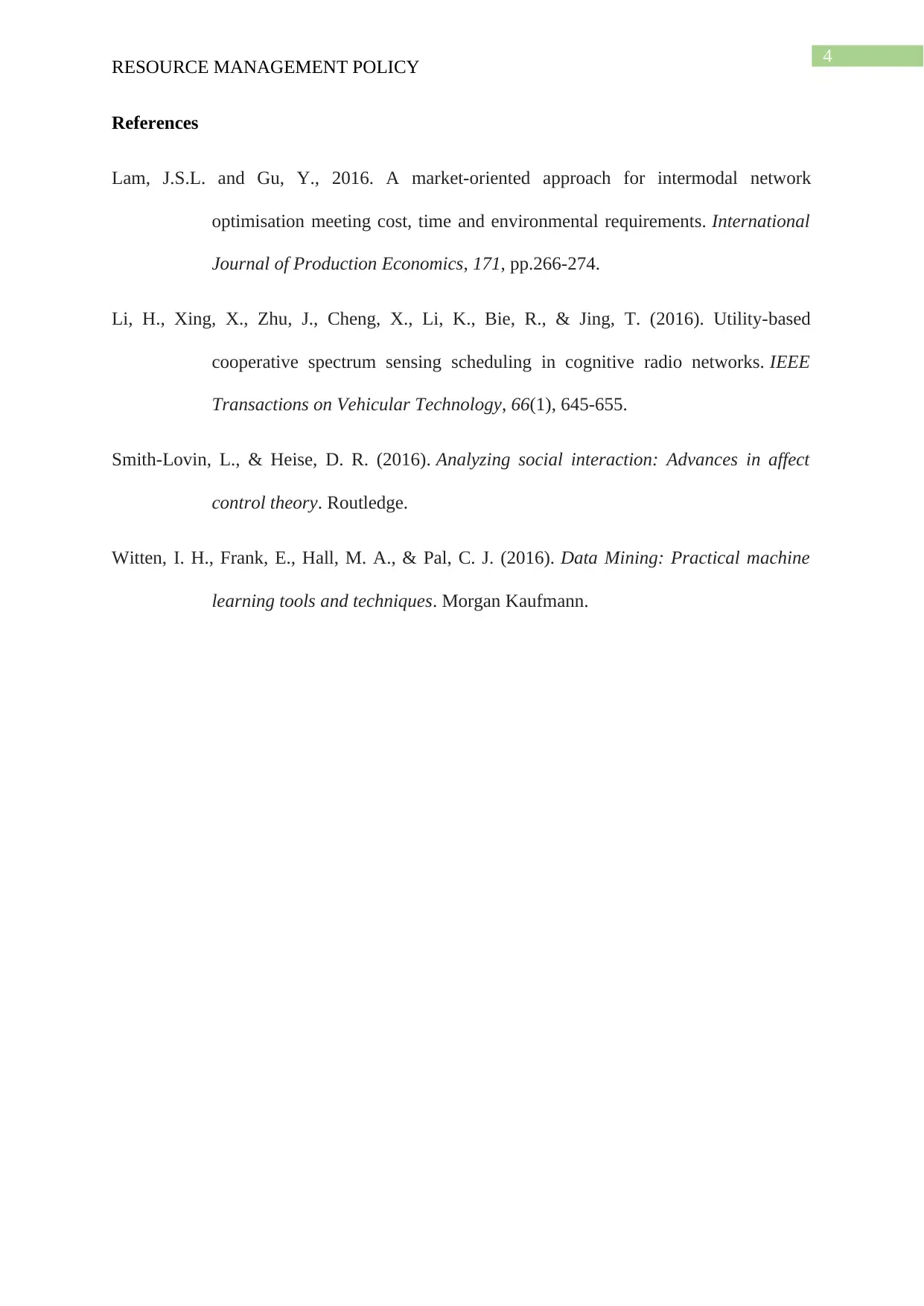A Comparative Analysis of Resource Management Policies: A Report
VerifiedAdded on 2023/04/22
|5
|729
|374
Report
AI Summary
This report provides an analysis of various resource management policies, evaluating their advantages and disadvantages. It examines control theory, machine learning, utility-based, and market-oriented approaches. The report discusses the benefits of control theory in analyzing system functions and optimizing design, while also acknowledging its complexity. It highlights the advantages of machine learning in trend identification and automation, as well as its susceptibility to data acquisition issues. The utility-based approach is praised for increasing profit and optimizing resources, but it is criticized for load imbalance. Finally, the market-oriented theory is noted for its focus on client needs, but also for potential compromises in product quality. References to relevant literature are also included.
1 out of 5











![[object Object]](/_next/static/media/star-bottom.7253800d.svg)